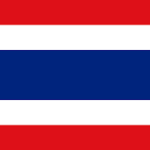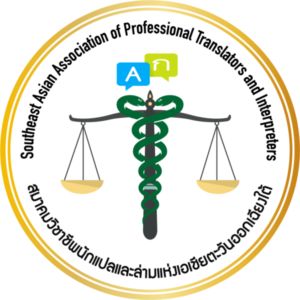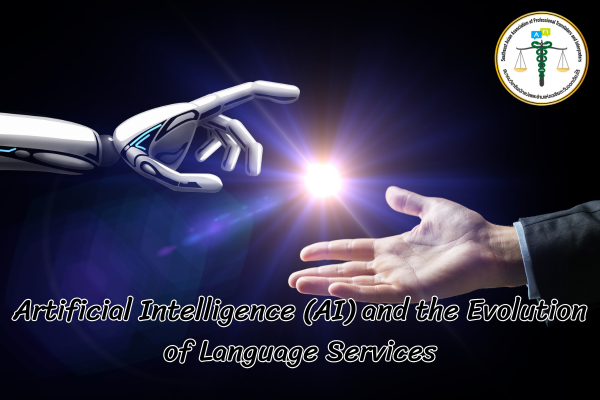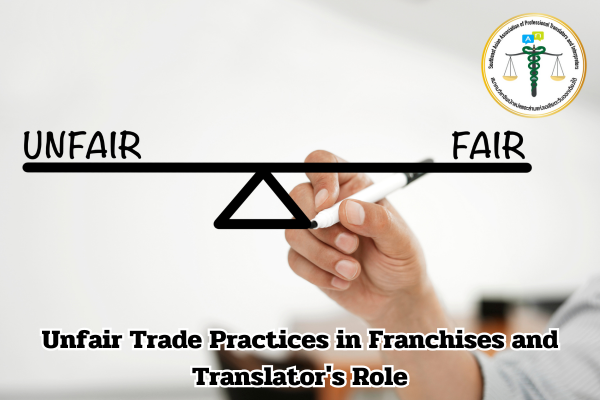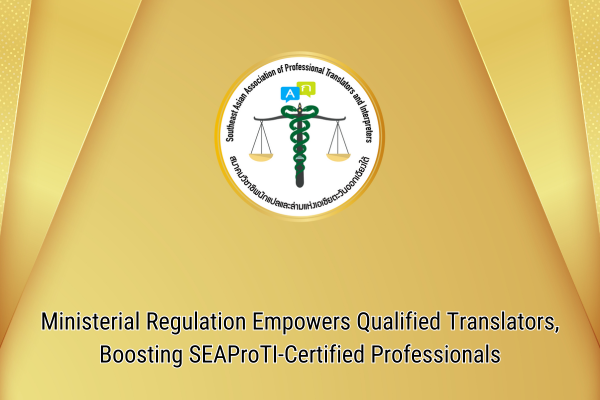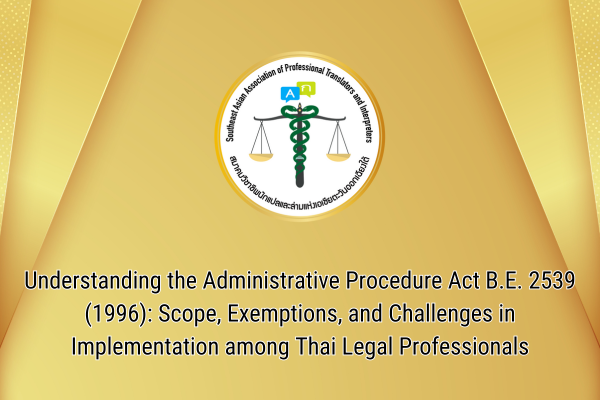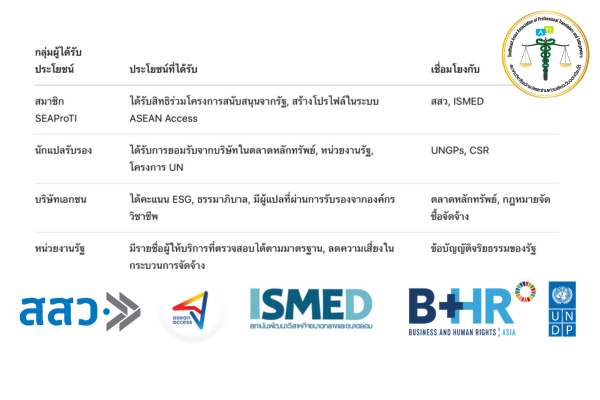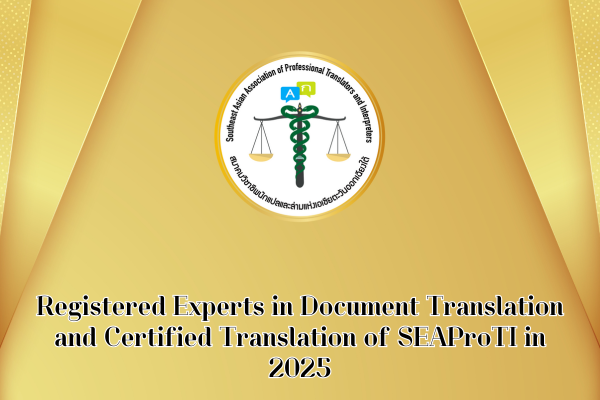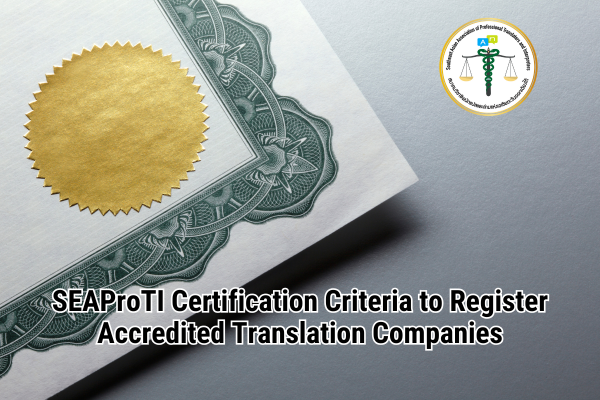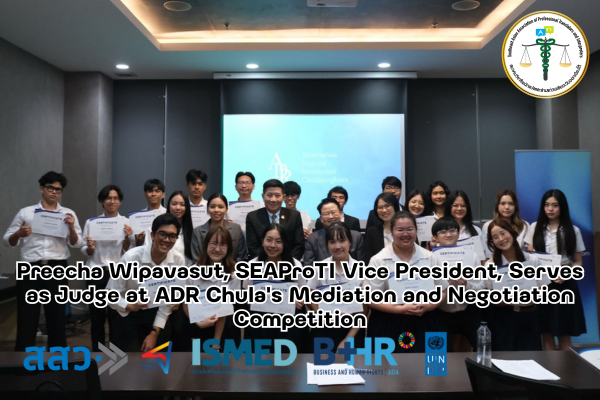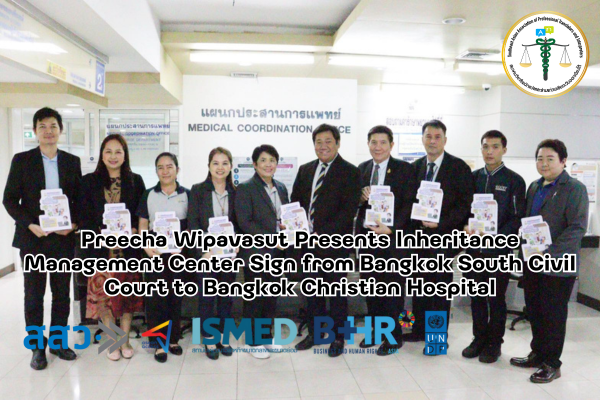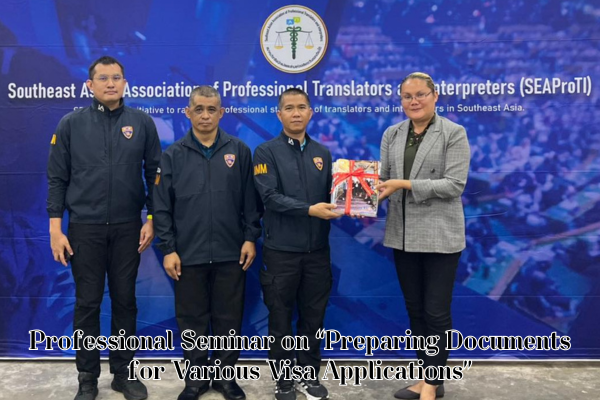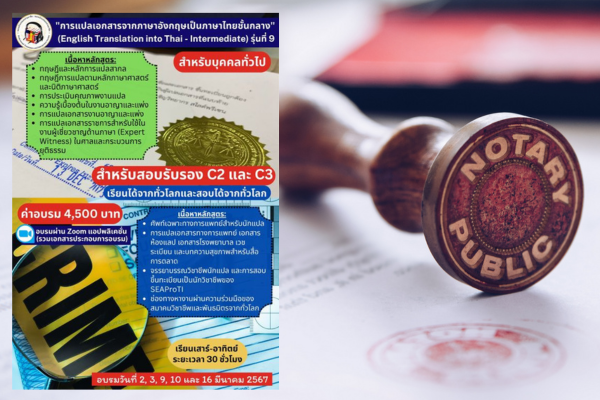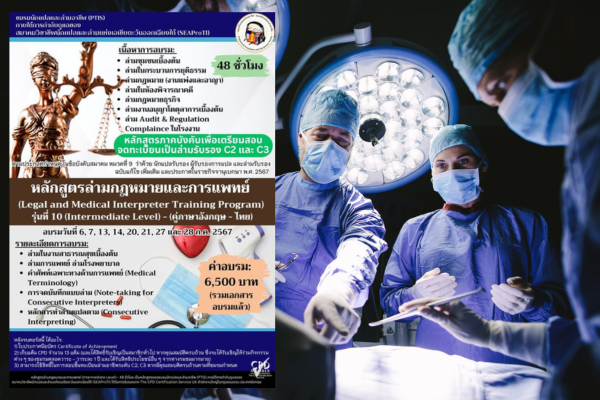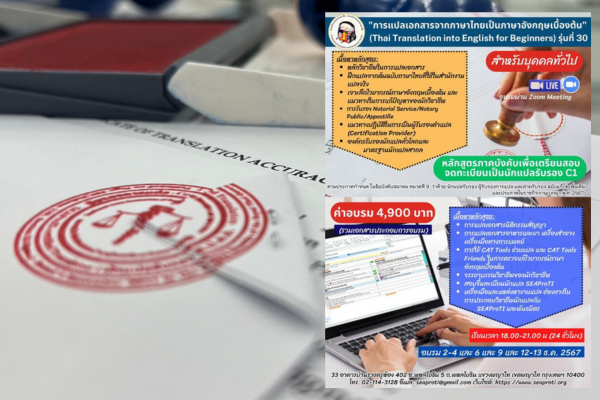Artificial Intelligence (AI) and the Evolution of Language Services
22 December 2024, Bangkok – The term “Artificial Intelligence” (AI) has become a buzzword across numerous industries globally. Within the realm of language services, AI represents both opportunities and challenges. As technology advances at a rapid pace, the language services industry inevitably evolves. One significant driving force of this change is Generative Artificial Intelligence (GenAI), which has opened the door to innovative transformations in translation and localization.
A New Frontier: Generative Artificial Intelligence
Generative AI has gained attention for its ability to create human-like content, and its impact on language services is profound. According to a recent report by CSA Research titled “CEOs Reflect on GenAI – July 2023,” insights were gathered from leading CEOs in the Language Service Provider (LSP) industry. Konstantin Loseleani of Janus Worldwide emphasized, “Traditional business strategies that once guaranteed success may no longer work. Resilience, adaptability, and foresight are critical. One must not fear change but instead look for opportunities within it.”
This reflection highlights the pressing need for businesses in the language services sector to embrace AI technologies. GenAI offers more than efficiency—it redefines the way translation and localization tasks are approached, challenging service providers to adapt quickly to remain competitive.
AI in Translation: The Power of PEMT
Post-Editing Machine Translation (PEMT) has emerged as a critical process in modern translation workflows. Leveraging AI, PEMT combines machine precision with human expertise to deliver high-quality translations. Companies like Lionbridge, a leading language service provider based in Massachusetts, have pioneered the use of PEMT. By integrating machine translation with human oversight, Lionbridge has achieved faster project turnarounds and cost savings, proving that AI can complement rather than replace human translators.
The success of PEMT demonstrates how AI can streamline workflows while maintaining the linguistic and cultural nuances that are crucial for accurate communication.
AI’s Impact on Localization
Localization is more than mere translation. It involves tailoring content to suit the cultural and contextual needs of a specific audience. While AI tools excel in processing large amounts of data and identifying trends, they fall short in understanding the intricate cultural nuances that native speakers inherently grasp. Human translators, particularly those familiar with local cultures, play an indispensable role in delivering authentic localization.
That said, AI significantly enhances localization processes by providing insights into consumer behavior, identifying emerging trends, and analyzing regional preferences. These insights enable language professionals to make informed decisions, ensuring that localized content resonates with its intended audience.
The Role of Humans in the Age of AI
While AI continues to evolve, it cannot fully replicate the human touch required for translation and localization. Creativity, emotional depth, and cultural sensitivity remain uniquely human capabilities. As Generative AI tools generate content, human translators and editors refine it, ensuring that the final output aligns with cultural norms and emotional contexts.
Collaboration between humans and AI represents the future of the language services industry. By leveraging AI’s efficiency and human expertise, businesses can achieve the perfect balance of speed, quality, and authenticity.
Conclusion
The integration of Artificial Intelligence into language services is not a passing trend but a significant shift. Generative AI and other advancements offer powerful tools for improving efficiency and expanding capabilities. However, the human element remains irreplaceable, particularly in tasks that require cultural sensitivity and emotional intelligence.
The future of language services lies in the partnership between humans and machines. This synergy ensures that translations and localized content are not only accurate but also meaningful and impactful. As the industry continues to evolve, embracing AI while maintaining the human touch will be key to success.
About SEAProTI’s certified translators, translation certification providers, and certified interpreters:
The Southeast Asian Association of Professional Translators and Interpreters (SEAProTI) has officially announced the criteria and qualifications for individuals to register as “Certified Translators,” “Translation Certification Providers,” and “Certified Interpreters” under the association’s regulations. These guidelines are detailed in Sections 9 and 10 of the Royal Thai Government Gazette, issued by the Secretariat of the Cabinet under the Office of the Prime Minister of the Kingdom of Thailand, dated July 25, 2024, Volume 141, Part 66 Ng, Page 100.
To read the full publication, visit: the Royal Thai Government Gazette
ปัญญาประดิษฐ์ (AI) และการพัฒนาบริการแปลภาษา
คำว่า “ปัญญาประดิษฐ์” (AI) ได้กลายเป็นคำที่ได้รับความสนใจในหลากหลายอุตสาหกรรมทั่วโลก ในแวดวงบริการแปลภาษา AI เป็นทั้งโอกาสและความท้าทาย ในยุคที่เทคโนโลยีพัฒนาอย่างรวดเร็ว อุตสาหกรรมบริการแปลภาษาได้รับผลกระทบอย่างหลีกเลี่ยงไม่ได้ โดยหนึ่งในปัจจัยสำคัญที่ขับเคลื่อนการเปลี่ยนแปลงนี้คือปัญญาประดิษฐ์เชิงกำเนิด (Generative AI) ที่ได้เปิดประตูสู่การปฏิรูปด้านการแปลภาษาและการปรับเนื้อหาให้เหมาะสมกับพื้นที่ (Localization) อย่างน่าทึ่ง
พรมแดนใหม่: ปัญญาประดิษฐ์เชิงกำเนิด
Generative AI ได้รับความสนใจเนื่องจากความสามารถในการสร้างเนื้อหาที่คล้ายคลึงกับมนุษย์ และมีผลกระทบอย่างมากต่อบริการด้านภาษา จากรายงานล่าสุดของ CSA Research ชื่อ “CEOs Reflect on GenAI – July 2023” ซึ่งได้รวบรวมความคิดเห็นจากผู้บริหารระดับสูงในอุตสาหกรรมผู้ให้บริการด้านภาษา (Language Service Provider: LSP) คอนสแตนติน โลเซเลียนี จาก Janus Worldwide ได้กล่าวว่า “กลยุทธ์ธุรกิจแบบดั้งเดิมที่เคยประสบความสำเร็จอาจใช้ไม่ได้อีกต่อไป ความยืดหยุ่น การปรับตัว และการมองการณ์ไกลเป็นสิ่งสำคัญ เราไม่ควรกลัวการเปลี่ยนแปลง แต่ควรมองหาโอกาสใหม่ๆ ในทุกการเปลี่ยนแปลง”
คำกล่าวนี้สะท้อนถึงความจำเป็นเร่งด่วนที่ธุรกิจในภาคบริการด้านภาษาต้องเปิดรับเทคโนโลยี AI Generative AI ไม่เพียงแต่มอบความรวดเร็วและประสิทธิภาพ แต่ยังเปลี่ยนแปลงวิธีการแปลภาษาและการปรับเนื้อหาให้เหมาะสมกับพื้นที่ โดยท้าทายผู้ให้บริการให้ปรับตัวอย่างรวดเร็วเพื่อความอยู่รอดในตลาดที่แข่งขันสูง
AI ในงานแปล: พลังของ PEMT
การแก้ไขหลังเครื่องแปล (Post-Editing Machine Translation: PEMT) ได้กลายเป็นกระบวนการสำคัญในงานแปลภาษาในปัจจุบัน ด้วยการใช้ AI PEMT ผสมผสานความแม่นยำของเครื่องจักรเข้ากับความเชี่ยวชาญของมนุษย์เพื่อนำเสนอผลการแปลคุณภาพสูง บริษัท Lionbridge ซึ่งเป็นหนึ่งในผู้ให้บริการด้านภาษาชั้นนำจากรัฐแมสซาชูเซตส์ ได้บุกเบิกการใช้ PEMT โดยการรวมการแปลด้วยเครื่องจักรเข้ากับการตรวจสอบโดยมนุษย์ Lionbridge สามารถลดเวลาการทำงานและประหยัดต้นทุนได้ในขณะที่ยังคงรักษาคุณภาพของงานแปล
ความสำเร็จของ PEMT แสดงให้เห็นว่า AI สามารถช่วยปรับปรุงกระบวนการทำงานในขณะที่ยังคงรักษาความถูกต้องและความเหมาะสมทางภาษาและวัฒนธรรม
ผลกระทบของ AI ต่อการปรับเนื้อหาให้เหมาะสมกับพื้นที่
การปรับเนื้อหาให้เหมาะสมกับพื้นที่ (Localization) ไม่ได้เป็นเพียงการแปลภาษา แต่เกี่ยวข้องกับการปรับเนื้อหาให้สอดคล้องกับวัฒนธรรมและบริบทของกลุ่มเป้าหมาย AI มีความสามารถในการประมวลผลข้อมูลจำนวนมากและระบุแนวโน้มได้อย่างมีประสิทธิภาพ แต่ยังไม่สามารถเข้าใจรายละเอียดทางวัฒนธรรมที่ซับซ้อนได้เท่ากับมนุษย์ นักแปลที่เป็นเจ้าของภาษาซึ่งคุ้นเคยกับวัฒนธรรมในพื้นที่ยังคงมีบทบาทสำคัญในการส่งมอบเนื้อหาที่เหมาะสมและน่าเชื่อถือ
แม้กระนั้น AI มีบทบาทสำคัญในการเสริมกระบวนการ Localization โดยการให้ข้อมูลเชิงลึกเกี่ยวกับพฤติกรรมของผู้บริโภค การระบุแนวโน้มที่เกิดขึ้นใหม่ และการวิเคราะห์ความชอบในแต่ละภูมิภาค ข้อมูลเหล่านี้ช่วยให้นักแปลสามารถตัดสินใจอย่างมีข้อมูลเพื่อให้เนื้อหาที่ปรับปรุงแล้วตอบโจทย์กลุ่มเป้าหมายได้อย่างแท้จริง
บทบาทของมนุษย์ในยุค AI
แม้ว่า AI จะพัฒนาไปมาก แต่ยังไม่สามารถแทนที่สัมผัสของมนุษย์ที่จำเป็นในงานแปลภาษาและการปรับเนื้อหาให้เหมาะสมกับพื้นที่ได้ ความคิดสร้างสรรค์ ความลึกซึ้งทางอารมณ์ และความละเอียดอ่อนทางวัฒนธรรมยังคงเป็นความสามารถที่มีเพียงมนุษย์เท่านั้นที่ทำได้ เมื่อ AI สร้างเนื้อหา นักแปลและบรรณาธิการจะทำหน้าที่ปรับปรุงและตรวจสอบเพื่อให้ผลลัพธ์สุดท้ายสอดคล้องกับมาตรฐานทางวัฒนธรรมและบริบททางอารมณ์
ความร่วมมือระหว่างมนุษย์และ AI คืออนาคตของอุตสาหกรรมบริการด้านภาษา การใช้ประโยชน์จากประสิทธิภาพของ AI ควบคู่กับความเชี่ยวชาญของมนุษย์ช่วยให้งานแปลมีความสมดุลระหว่างความรวดเร็ว คุณภาพ และความถูกต้อง
บทสรุป
การผสานปัญญาประดิษฐ์เข้ากับบริการด้านภาษาไม่ใช่เพียงแค่กระแสชั่วคราว แต่เป็นการเปลี่ยนแปลงครั้งสำคัญ Generative AI และเทคโนโลยีอื่นๆ นำเสนอเครื่องมือที่ทรงพลังในการเพิ่มประสิทธิภาพและขยายขีดความสามารถ อย่างไรก็ตาม องค์ประกอบของมนุษย์ยังคงเป็นสิ่งที่ไม่สามารถแทนที่ได้ โดยเฉพาะในงานที่ต้องการความละเอียดอ่อนทางวัฒนธรรมและความเข้าใจทางอารมณ์
อนาคตของบริการด้านภาษาขึ้นอยู่กับความร่วมมือระหว่างมนุษย์และเครื่องจักร ความร่วมมือนี้ช่วยให้การแปลภาษาและการปรับเนื้อหาให้เหมาะสมกับพื้นที่ไม่เพียงแค่ถูกต้อง แต่ยังมีความหมายและส่งผลกระทบในเชิงบวกอย่างแท้จริง ในขณะที่อุตสาหกรรมยังคงพัฒนา การเปิดรับ AI ควบคู่ไปกับการรักษาสัมผัสของมนุษย์จะเป็นกุญแจสำคัญสู่ความสำเร็จ
เกี่ยวกับนักแปลรับรอง ผู้รับรองการแปล และล่ามรับรองของสมาคมวิชาชีพนักแปลและล่ามแห่งเอเชียตะวันออกเฉียงใต้
สมาคมวิชาชีพนักแปลและล่ามแห่งเอเชียตะวันออกเฉียงใต้ (SEAProTI) ได้ประกาศหลักเกณฑ์และคุณสมบัติผู้ที่ขึ้นทะเบียนเป็น “นักแปลรับรอง (Certified Translators) และผู้รับรองการแปล (Translation Certification Providers) และล่ามรับรอง (Certified Interpreters)” ของสมาคม หมวดที่ 9 และหมวดที่ 10 ในราชกิจจานุเบกษา ของสำนักเลขาธิการคณะรัฐมนตรี ในสำนักนายกรัฐมนตรี แห่งราชอาณาจักรไทย ลงวันที่ 25 ก.ค. 2567 เล่มที่ 141 ตอนที่ 66 ง หน้า 100 อ่านฉบับเต็มได้ที่: นักแปลรับรอง ผู้รับรองการแปล และล่ามรับรอง
